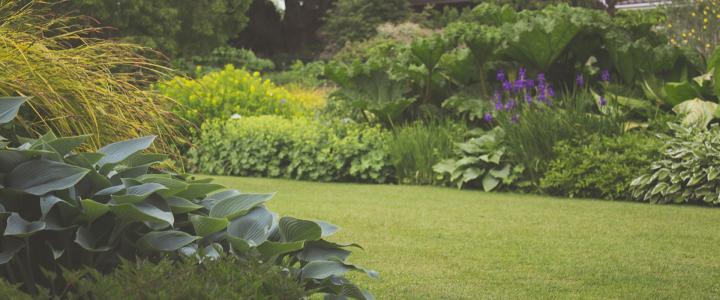
September 2023: Invasive Plants – More Deadly than You Think!
With autumn approaching and plants slowly fading, you may think that invasive plants aren’t as much of a concern. However, invasive plants are just as prominent as ever in this season since many of these plants are herbaceous perennials or woody, meaning that they regrow year after year. It’s important to learn about what plants are invasive and how to dispose of them properly so that you can prevent the growth and spread of invasive species.
What are invasive species anyway?
Invasive species include any non-native species that can pose direct impacts to the ecological health of an ecosystem. They can be particularly harmful for the environment by taking resources away from native species and even outcompeting them. This can allow invasive species to take over an entire area without fulfilling much of a role or purpose in the ecosystem. Aside from their environmental degradation, invasive plants can also be problematic for residents trying to recreate outside.
Common invasive plants in New Hampshire
It’s important to be aware of invasive plant species in New Hampshire and to not be further spreading invasive species. By knowing a few species to look out for, you could be preventing damage in our ecosystems and protecting native plant life. While there are several invasive plants in New Hampshire, here are a few common ones that you might find in your backyard. For a complete list of invasive plant species, please go to the NH Guide to Upland Invasive Species or refer to resources from the New Hampshire Department of Agriculture, Markets and Food.
Purple Loosestrife
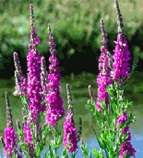
Purple loosestrife is a purple perennial flowering plant that can grow from 2-6 feet tall. While it normally grows near waterbodies, it can adapt to a variety of environments. This plant is extremely invasive because one adult plant can generate 2.5 million to 2.7 million seeds annually, with their seeds being viable and usable for years after. The plant can also resprout from broken stems, unground roots and plant fragments.
Japanese Knotweed
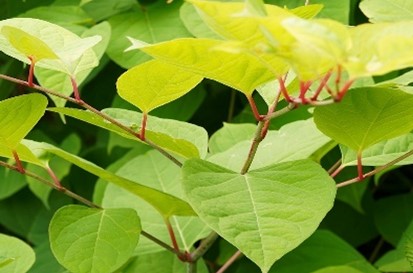
Japanese knotweed is a shrubby herbaceous perennial that can grow up to 8 centimeters a day during spring. The plant has a rooting system compromised of intertwined rhizomes that give it an edge in outcompeting other species; it can even regenerate from root fragments.
Multiflora Rose
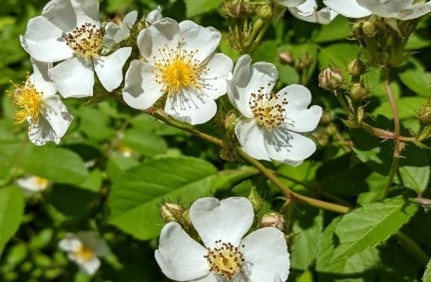
Multiflora rose is a perennial woody shrub that can grow to be over 15 feet in height and 10 feet in width. When it grows as a climbing vine, it can reach 25-30 feet tall. An adult plant contains around 500,000 seeds, and these seeds remain viable for 10-20 years after being produced, which allows it to spread rapidly.
Oriental Bittersweet
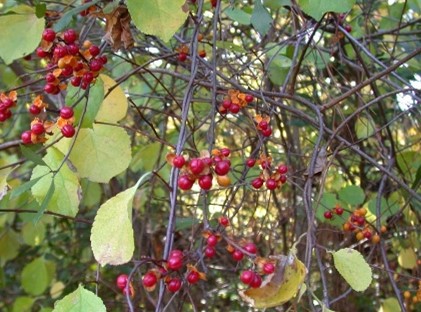
Oriental bittersweet is a perennial woody vine that threatens native plants because it climbs on other plants, taking their resources. Bittersweet has glossy and round leaves that grow to be around 2-5 inches long, as well as recognizable orange roots. While it’s usually found in grasslands, it can adapt to forested and shady areas.
You can never be too careful
While these are just a few examples of invasive plants, there are so many more invasive species that can harm New Hampshire ecosystems. If you see a plant that you are unfamiliar with in your backyard, make sure to look it up. When it comes to invasives, remember that you can never be too careful!
How do I get rid of invasive plants?
If you notice an invasive plant species in your backyard, it’s important to remove and dispose of it properly so that it doesn’t spread throughout the area. There are different ways to remove invasives, so you should decide the best method depending on the spread of the invasive in your area.
Physical removal
The most basic way to get rid of invasive plants is to physically remove them. While this method does sound straightforward, it can actually be difficult since you have to ensure that all parts of the plant are removed. Once removed, you should bag up the plant and put it in the garbage immediately. Composting is an option for SOME invasive plant species, but, if done incorrectly, it could allow them to regerminate if their seeds are combined in the compost mix. If you compost in your backyard or garden, the invasive plant can find its way back into the ecosystem and further harm native species. It’s recommended to put the invasive plants in the trash unless you are working with a commercial composting facility that has agreed to accept them. By being thorough with removing invasives, you can help preserve and protect our New Hampshire ecosystems, one plant at a time.
Chemical removal
While physically removing invasive plants is manageable with a small number them, removing a cluster of invasive plants can seem overwhelming and even impossible. In cases where you have a larger number of invasive plants, chemically removing them may be an easier option. However, some chemical options can be harmful to native plant life. One chemical that controls the spread of invasive species is glyphosate, which is a nonselective chemical that kills everything it touches. Although glyphosates may kill native plant species, it may be necessary to use a nonselective chemical if an invasive species is widely distributed throughout an area.
There are also other chemical options to remove invasive species that are more selective in what they kill. Triclopyr is one example of a selective chemical, which means that it only controls certain types of plants. Whether you decide to use the selective chemical option or need to use something more heavy-duty to rid invasives, make sure to read labels, apply appropriately and follow directions on the chemicals, both for the environment’s safety and your own! Refer to the New Hampshire Department of Agriculture, Markets and Food for more guidance on chemical and pesticide usage.
Be a hero from your own backyard
By being aware of invasives and educating yourself and others about their dangers, you can make an impact on your own environment. It may not seem like much, but early detection and removal of invasive plants is critical for preventing further spread. These small steps can have a big impact on our New Hampshire ecosystems and preserving our native species.




